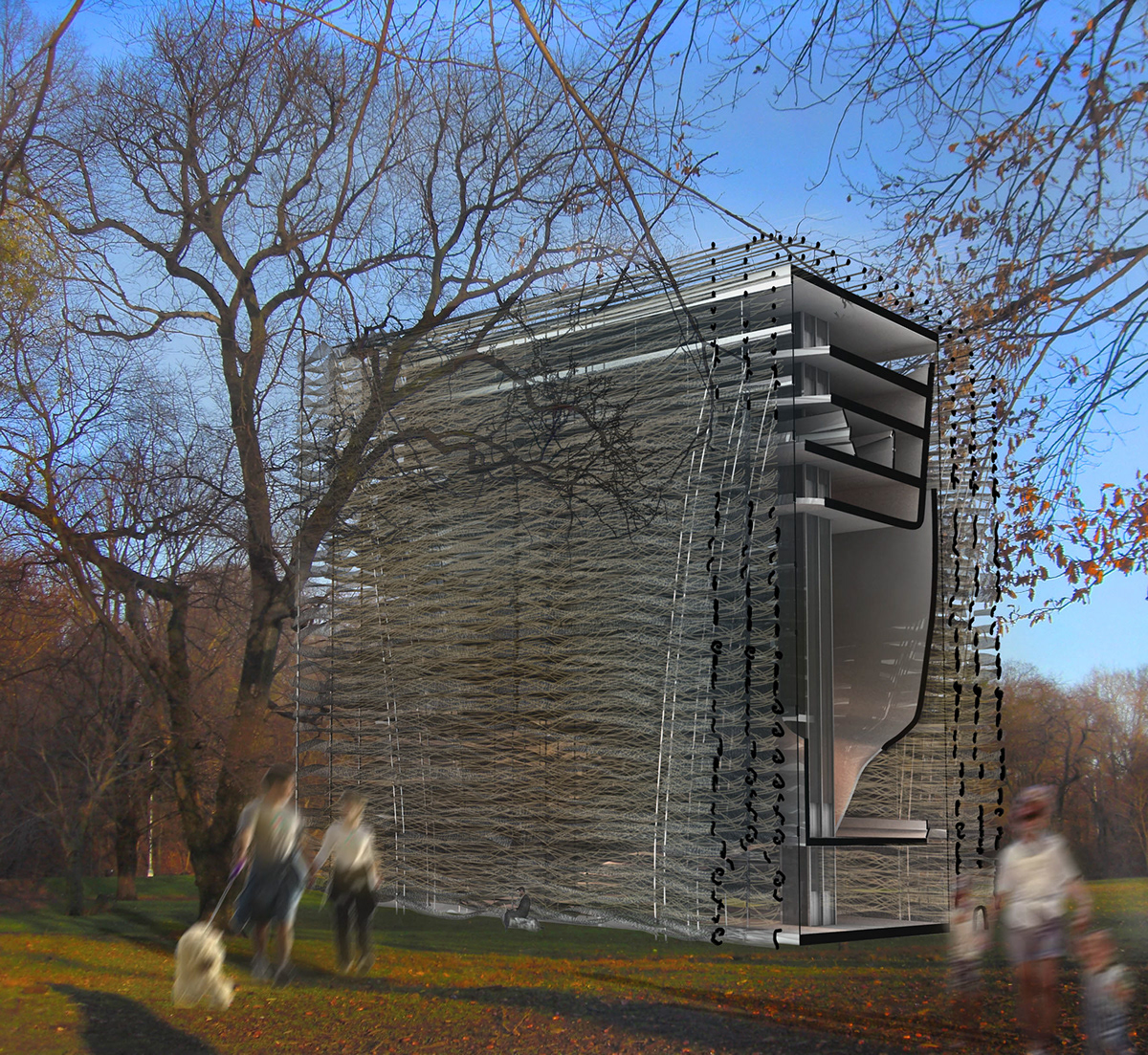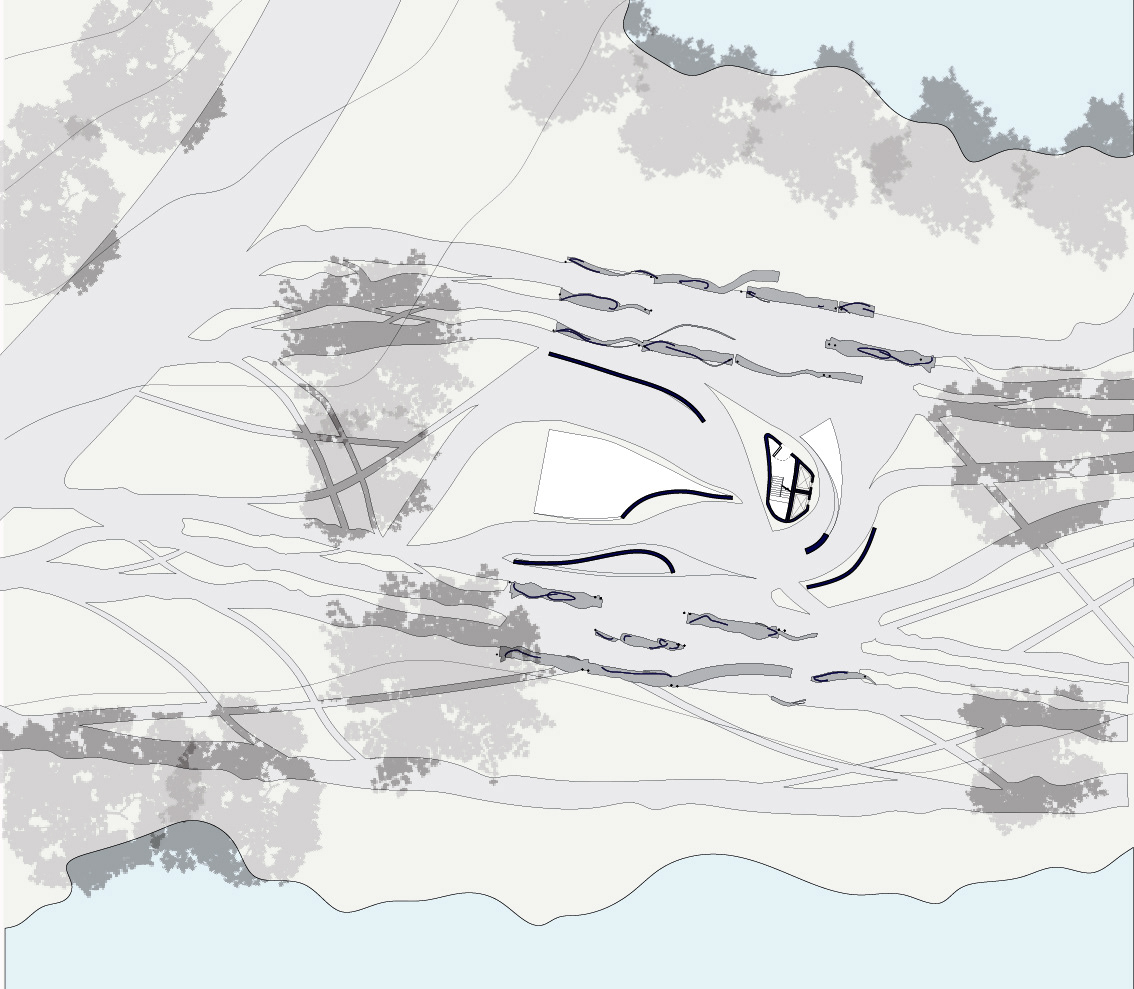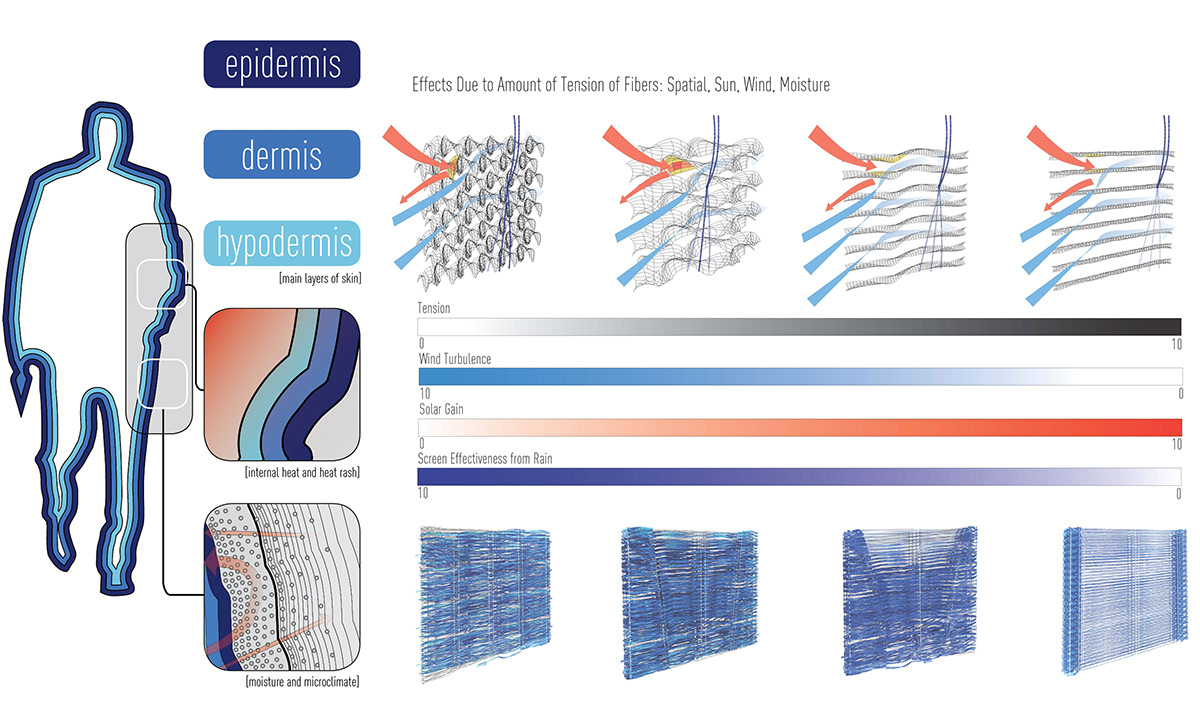Integumentary Architecture
Fibrous Facade
Fibrous Facade
During my semester at the Center for Architecture Science and Ecology I researched the human integumentary system and how it can be developed into a working sustainable facade for an art gallery located in Prospect Park in Brooklyn, New York City. My research was focused on clothing, the fourth layer of skin, and the micro climates it creates directly around a body. This focus stemmed from understanding of heat rash and its architectural implications if applied to a facade. In order to prevent heat rash air flow is needed to wick the moisture away. This fibrous facade dynamically changes according to the time of year and the area of the building that needs the most insulation or cooling. Just like how a piece of clothing can be stretched to allow air flow through, the fibers on the facade can also stretch, creating more visibility, airflow, and sunlight. The render to the left shows the facade with an increasing amount of tension as it reaches the top of the building.
The negative spaces of the facade and the amount of visibility present when the fibers are in tension or relaxed help imply the form of the interior of the building. Two mobius strips start at the bottom gallery where less privacy is needed and travel to the top to create more privacy and protection from outside elements.
The negative spaces of the facade and the amount of visibility present when the fibers are in tension or relaxed help imply the form of the interior of the building. Two mobius strips start at the bottom gallery where less privacy is needed and travel to the top to create more privacy and protection from outside elements.







